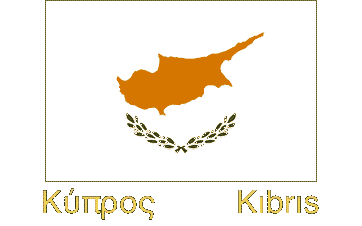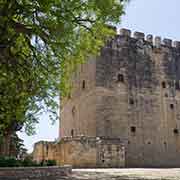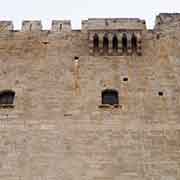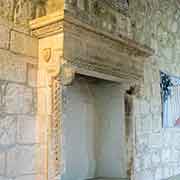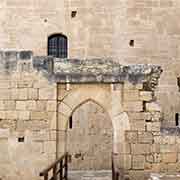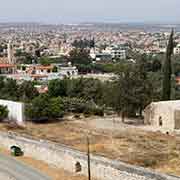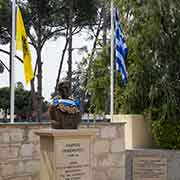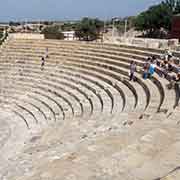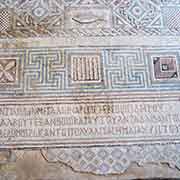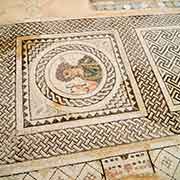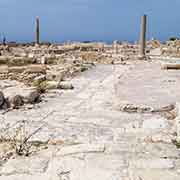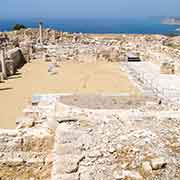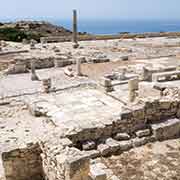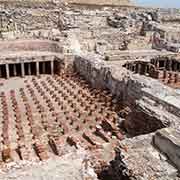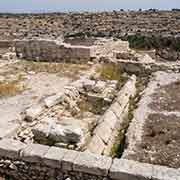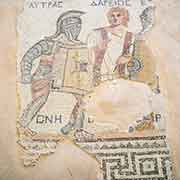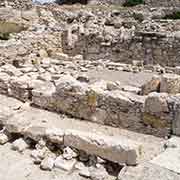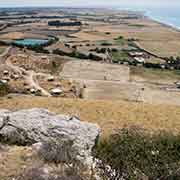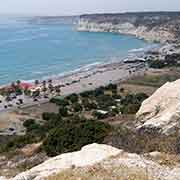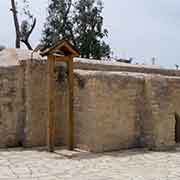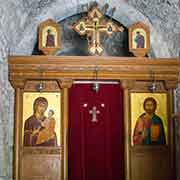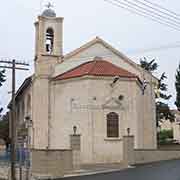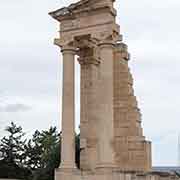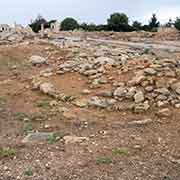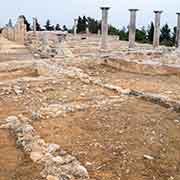Photos of Archaelogical sites near Limassol, Cyprus
Archaelogical sites near Limassol
To the southwest of Limassol is the Akrotiri peninsula with its Royal Airforce Base in the British Overseas Territory of Akrotiri and Dhekelia. It stretches along the coast to about 35 kilometres west of Limassol. The Base area partly includes the villages of Kolossi and Episkopi and the archaeological sites of Kourion and Apollo Hylates. However, there is no border, and apart from the actual base, all are freely accessible.
you may then send it as a postcard if you wish.
Just south of Kolossi village, about 12 kilometres west of Limassol, is Kolossi Castle. It is a former Crusader stronghold, possibly built in 1210 by the Frankish military, when the land of Kolossi was given by the King of the Kingdom of Cyprus, Hugh I, to the Knights of the Order of St John of Jerusalem (Hospitallers). The current structure dates from 1454 and is probably built over the older fortified building by the Hospitallers, under Louis de Magnac, the Commander of Kolossi. The Coats of Arms of the Lusignans of Cyprus is on an escutcheon over the entrance.
About 6 kilometres west of Kolossi is the site of the ancient city-state of Kourion. This site had been occupied since antiquity and was a kingdom as far back as 1000 BCE. Between 570-475 BCE is was one of the most influential in Cyprus. After 58 BCE, it came under Roman rule and was named Curium; it reached the climax of its influence in the Roman and Late Roman periods. It has a Greco-Roman theatre of 250 CE and immediately above it the House of Eustolios, dating from the late fourth century; the well-preserved mosaic floor has an inscription stating that “this house is girt by the much-venerated signs of Christ”. The House of the Gladiators, with its mosaics of gladiators, was probably a public palaestra, a Greek wrestling school. There are more houses, a Roman bath, and the remains of the Episcopal Basilica of Kourion, one of the island’s most important Early Christian monuments. It was built in the early 5th century CE on Roman ruins. It was destroyed around 654 CE during Arab raids and abandoned in the late 7th or early 8th century.
About 3 kilometres west of Kourion is the Temple of Apollo Hylates, one of the main religious centres of ancient Cyprus, where Apollo was worshipped as a god of the woodlands. The worship of Apollo on this site began as early as the 8th century BCE and continued until the 4th century CE. It has undergone many extensions and alterations in different periods. The majority of what is visible today belongs to the site’s 1st century CE restorations. The severe earthquake of 364-5 CE destroyed the temple. It is now partially restored.


